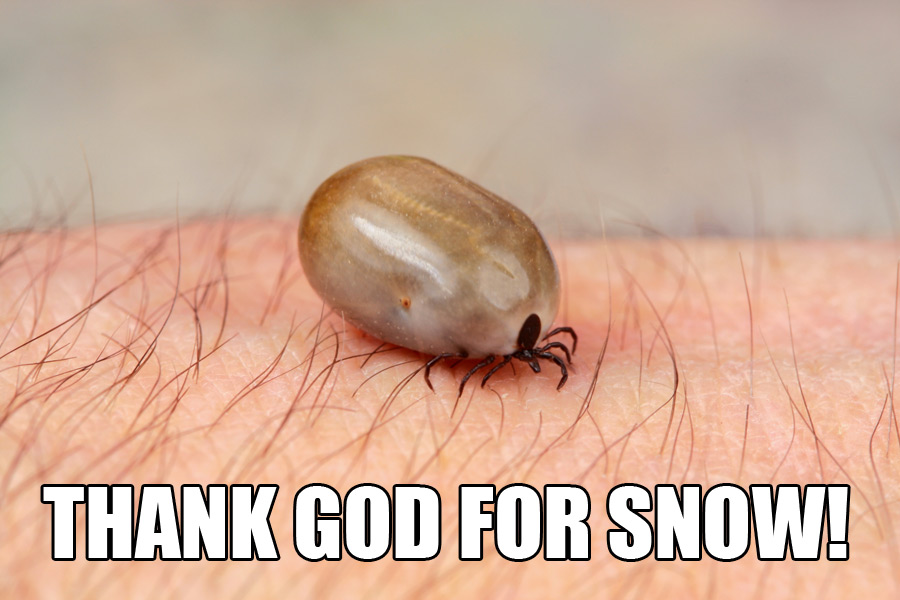Does a Harsh East End Winter Mean Less Ticks in Spring?

As I was riding in the car this past week, en route to some great German food and beer at Shippy’s Pumpernickels East Restaurant, my companion posed the question, “I wonder what happens to ticks when the winters are really harsh. Do more die off as it gets colder and more snow accumulates?”
That would sure make me and a lot of other people living on the East End happy.
Having left my phone at home, I was unable to look up the answer. However, when we returned to the house, I was surprised to find the facts were much different than our collective hypothesis.
It is only natural to think that a bad winter, like the one we are currently experiencing, would have a negative effect on the populations of almost all forms of wildlife. Was I wrong!
Peter Jentsch, a scientist with Cornell Cooperative Extension’s Hudson Valley Lab has been quoted as stating, “Most living things are able to survive environmental extremes if they have enough time to transition and acclimate to change”
And that is certainly the case with ticks. Research indicates that very low temperatures can affect tick populations and other bugs, but it is “variability” that has the most impact.
Ticks actually do better when there is a lot of snow and the temperature remains below freezing. This is because ticks like damp places, and the snow also insulates them as they tough out the winter.
However, the researchers found that fluctuations in temperature does have a negative impact on ticks’ survival. When the weather rises above freezing, with no snow, ticks tend to emerge from their settled positions. Then, if it gets very cold in a short period of time, they can get trapped before they are resettled in their cozy little havens. Even if successful, the effort of emerging and retreating is very draining on their little tick systems.
What’s draining on our human systems is when these Lyme disease-carrying little bastards (deer ticks, aka black-legged ticks) attach themselves and start sucking our blood. If they are not removed within the first 36 hours after the initial attachment to our bodies, their devastating and sometimes even fatal bacterial infection can transmitted.
The Empire State Lyme Disease Association reports that New York has one of the highest incidences of Lyme Disease in the United States.
Armed with this new information, let’s all pray for some rapid variations in weather over the next few weeks. Hopefully we can end up with fewer ticks this spring and a more enjoyable time outdoors.









